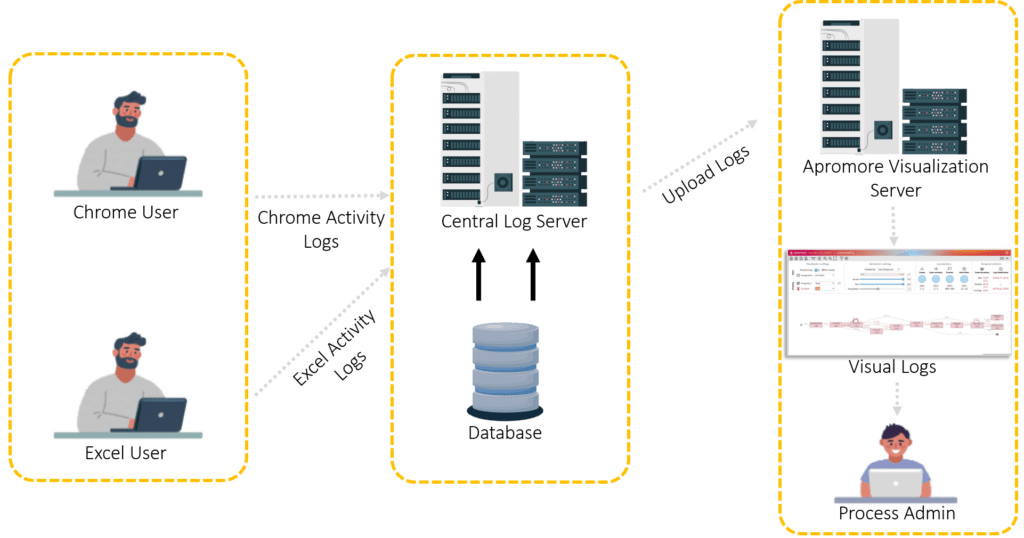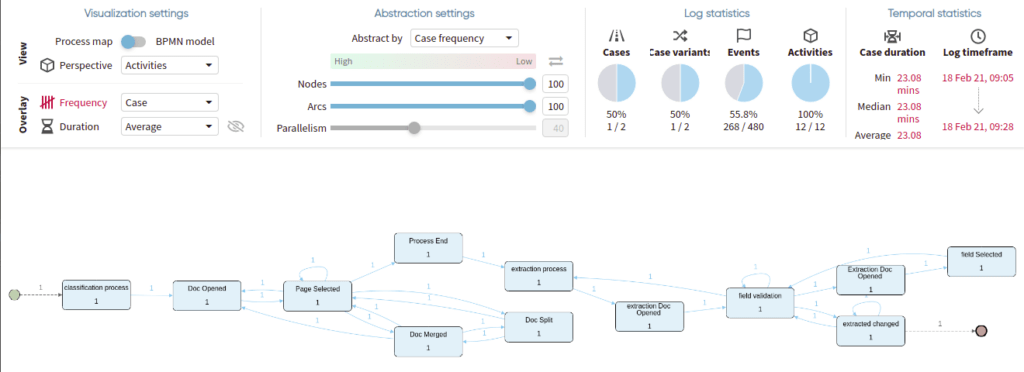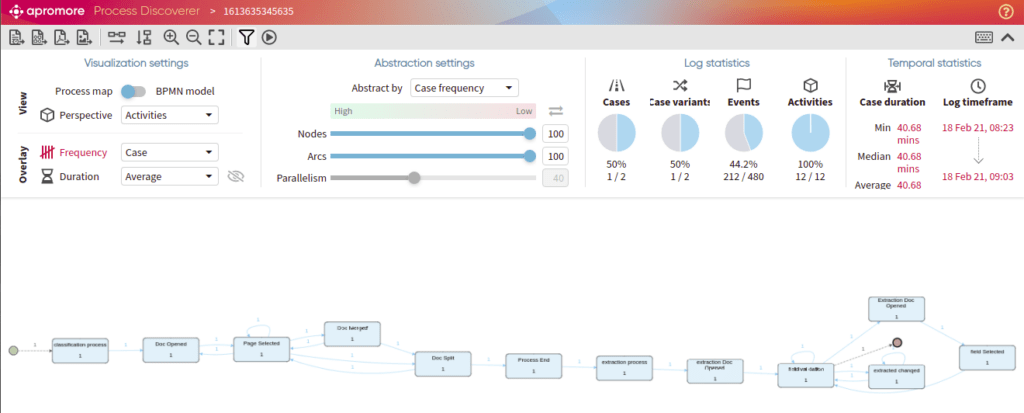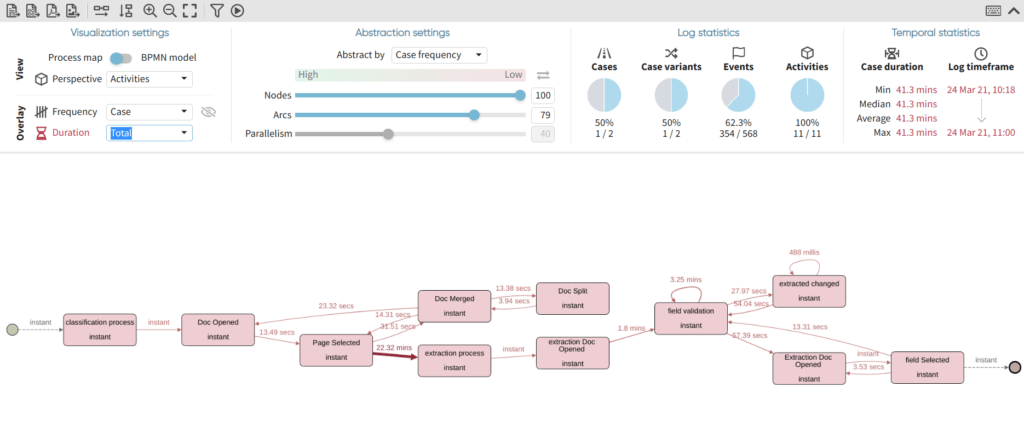Process Mining – An Essential Step in Digital Transformation
Business process optimization is a laborious and time-consuming activity. In the new digitally-enabled world of intelligent process analytics, every piece of information that flows through the business creates a plethora of interesting insights revealing where the information was transferred and when. With most of the companies going through digital transformation, the two main pillars of focus are data and process. While data analytics provides deep insights into businesses to drive decisions, process optimization and automation can severely reduce the bottom line, improving margins.
A new generation of intelligent analytics tools allows companies to use data to scrutinize their back-office operations. These tools help in rapidly analyzing thousands of transactions to reveal the underlying process flows and help managers segment business data in multiple ways. They can monitor the effectiveness of new digital workflows, identify the categories of tasks that still require labor. They also help in formulating process changes or automation efforts.
With many companies pursuing digital transformation, process mining is increasingly gaining importance.
What is Process Mining?
Process mining is an analytical discipline for discovering, monitoring, and improving business processes. With the combination of data mining and process analytics, organizations can mine log data from their information systems to understand the performance of their operations, bottlenecks, and areas for improvement.
Process mining leverages a data-driven approach to process optimization that allows managers to remain objective in their decision-making around resources allocation for existing processes. Process Mining automatically analyzes business processes based on the event logs ERP, CRM, Ticket Management, and other such software systems to identify specific areas for improvement on the operational level. Process mining provides a data-driven, real-time view of operations allowing businesses to understand and document current processes, define standard processes, measure compliance, and optimize processes by reconfiguring the flow or training staff and prioritizing automation for high-cost operations.

Why is Process Mining important?
- According to Forrester, 37% of businesses and technology decision-makers report that their organizations experience manual routing and process gaps.
- 61% of respondents said that the provision of factual process data used for further diagnosis is the most crucial benefit of process mining
- Using process mining during RPA implementation, companies can enhance their value by up to 40% along with reducing RPA implementation time by as much as 50%
Steps to Process Mining
Discovery – Most organizations that have been around for a long time have processes that are organically developed without any deliberate attempt to understand or structure them. Also, most of these processes are concentrated in groups and known to a few people who have been around for a long time. Just like in data analytics, the first phase is to discover and catalog all data sources, it is important to discover and document processes or workflows being followed in different groups within the organization. A process mining tool allows a simple dashboard to visualize workflow being followed by individuals with different roles within an organization. This is a first step towards defining process strategy, documenting the process for consistency and compliance, and optimizing processes to save cost.
Conformance and deviation – It is important for an organization to have consistent processes across various groups in different offices. The uniformity allows smooth onboarding of new hires, seamless movement of people between groups with a minimum amount of training, clear auditing for compliance, and fast companywide transition to continuously improved processes. Once the process is discovered, it can be optimized visually in a tool to decide a common process. Another way to approach this is using Business Process Management tools to come up with an ideal process. The actual process can then be checked for conformance with the proposed, ideal process and any deviations can be identified and addressed. Also if compliance regulations mandate specific steps to be taken in a workflow, the conformance analysis can help to identify anybody not following those steps.


Optimization – One of the biggest benefits of process mining is to use process discovery as it helps in optimizing the overall cost of running the operations. The process view provides detailed information on various paths, the number of people involved, time involved in each process, manual vs automated portions. This information can be used to decide more optimized paths, redistribute work amongst different roles, automate more time-consuming parts, and train people who are deviating from the process.
How is Process Mining implemented?
All actions in various IT systems within the organizations are captured in event logs and visualized with the help of process mining. Here is a step by step approach –
- The human interaction with IT systems creates a digital record. Examples of such records are receiving an order, reviewing a document, approving a loan, entering information into a health record.
- Process mining software transforms these digital records into event logs. Event logs have attributes like IT system. ID, user id, role, timestamp and activity-specific data.
The event logs are imported into a process mining tool like Appromore with the mapping of attributes to the format that it understands. The tool displays process visualization in custom or using BPMN notations.

- A standard process model created using BPMN notation can be compared against the generated model using real-time data to detect conformance and deviations.
- The tool also shows various paths taken during the process by different people and time spent for each process execution. This information can be used for retraining and also for deciding on use of Robotic Process Automation (RPA) for some of the workflow processes.
Use cases of Process Mining
Process mining has been used across a wide variety of Industries. Process maps are crucial as they highlight the KPIs that help businesses to scrutinize their operational efficiency.
- Finance – optimize processes, for audit accounts, loan approvals, closed loan due diligence and compliance audit processes.
- Healthcare –optimize medical coding workflow for insurance claims, to reduce treatment processing time of patients.
- Ecommerce- optimize supply chain workflows, to detect and optimize customer journey through the website
- Manufacturing – optimize machine and operator time and activities for a fast operations.
- Public Sector – streamline workflows for public welfare programs involving multiple departments.
It is high time to switch to Process Mining
Using process mining has become a work of priority. it uses automated backend corporate data.
It gives you real insights into your processes and reduces the labor costs to realize workflows. It is helping companies to analyze data sets having millions of events. Taking these events into account, companies can take complete control of their organization by using innovative process analysis.
The most innovative analytical tools can deliver only valuable if they are used in the broader transformation effort. Companies are using process mining with significant effects in several different sectors. But still, companies need teams of people with the skills, influence, and motivation to design effective processes and select appropriate KPIs, turn analytical insights into a plan of action, and then test, rollout, and sustain those processes.
